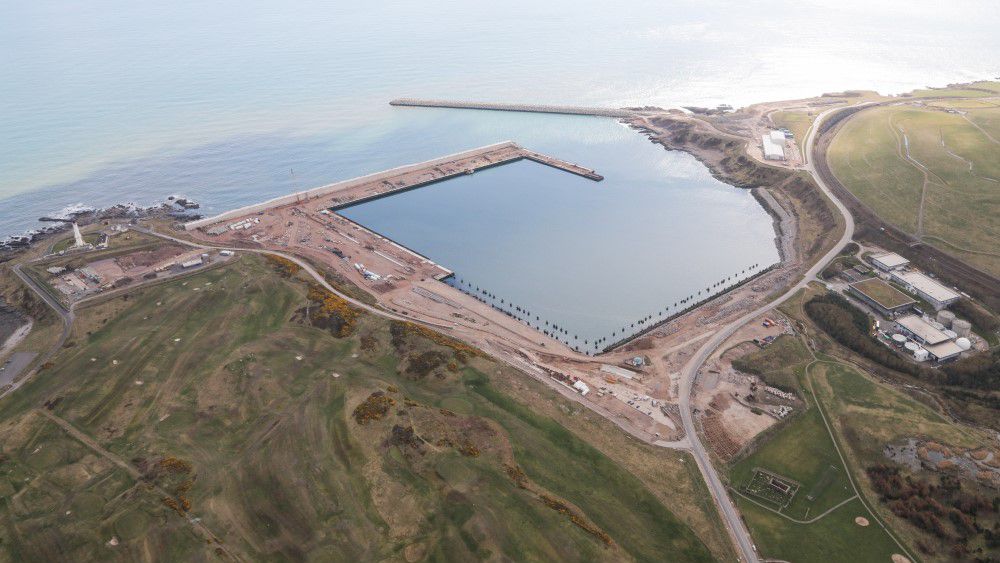2021
Devon, United Kingdom
The Great Western main line runs westwards from London Paddington to Penzance and is a vital link for transport, tourism and freight movements. It’s the only line running to the south-west of England. In February 2014, the collapse of the Dawlish seawall (due to a sizeable storm) severed the whole of the south-west peninsula from the rest of the country for eight weeks, and it took 300 people and more than £30m to put right.
Following the 2014 collapse, a close assessment of the sea defence along the rest of the line was carried out and it was concluded a number of reinstatement projects had to take place quickly to safeguard the vital rail network, local residents and the South West economy.
Concretes for the Marine Parade and Town Gate sections were designed, developed and delivered by Hanson UK and BAM Nuttall, using Sika products. The £1.6m contract to supply and upgrade the seafront in Dawlish, Devon, included a high-specification underwater concrete that other providers were unable to deliver.
"Dawlish tested all aspects of our capabilities as a concrete supplier and when other suppliers say something can’t be done, we see that as our opportunity to show why we are the best. The logistical and operational challenges of pouring in a tidal zone with limited work space, next to a live railway, is obviously a huge challenge for all involved but I believe it’s actually the bespoke mix solutions that have set us apart." David Cullimore, General Manager (south-west), Hanson UK
Project Requirements
In order to meet customer needs, the Hanson UK team developed several bespoke mixes for the project. For the seawall’s new foundations, the team turned to Sika for an underwater concrete containing silica fume that was of high-density, high consistence and suitable for severe exposure conditions.
One of the most complex mixes the team has ever produced, it needed to:
- have early strength of striking the formwork
- be pumped long distances under the rail line
- Retain high consistence for placing
- be poured into sea water and not segregate or allow washout of the cements
- set quickly inside the tight tidal window
- be durable for the structure’s 100-year intended working life.
Sika Solutions
SikaFume-50 S, a stabilised silica fume additive for ultra-high-performance concrete was agreed for the project.
SikaFume-50 S has been scientifically developed for uses such as sea/coastal defence systems, high-rise buildings, tunnels, bridges and scrapyards. Composed of very fine solid glassy spheres of silicon dioxide, it is a by-product of the industrial manufacture of ferrosilicon and metallic silicon in high-temperature electric arc furnaces. Silica fume particles have a diameter of less than 1 micrometer (1μm); about 100 times smaller than the average cement particle.
As an addition to Portland cement and blended cement-based concretes in combination with a plasticiser/superplasticiser, the silica fume particles are dispersed amongst the cement particles, resulting in improvements to the paste matrix promoting positive pozzolanic reactions between the silica fume and free calcium hydroxide in the paste. The resulting fine, uniform matrix can give noticeably higher compressive and therefore flexural strength. Silica fume also reduces the rate of carbonation and decreases permeability of a concrete structure to chloride ions, which is critical to protecting reinforced steel concrete from corrosion, especially in chloride-rich environments such as coastal regions.
Importantly the ‘fixotropic’ nature of the resulting concrete’s rheology reduces washout of the cement when the concrete is placed underwater.
Carbon reduction
Elsewhere on the project and separate to the underwater silica fume mix, technical experts from Hanson UK, working in collaboration with BAM’s construction design team, were able to reduce CO2 by using a high GGBS-based concrete as an infill to the rear of the facing panels.
In this case, more than 250 tonnes of CO2 were saved over 1400m3, a reduction of two thirds versus a conventional concrete of the same strength.
Up to the task
Jack Brookes, site manager at BAM Nuttall, commented: “Logistically the site is difficult to manage and the added constraints which came to light as the design was developed made the scheme extremely challenging. But Hanson’s understanding of the challenges and technical requirements provided BAM with the ability to deliver the scheme (even through a pandemic!)”
Futureproofing
Across the entire project, a total of 1312 tonnes of CO2 was saved, equivalent to:
- 1223 return flights from London to New York (13,649,604km)
- One person driving 7,527,251km
- One person taking 1456 return train journeys from Portugal to Vietnam (35,517,054km),
[Reference]:
(1.) CLIMATE CHANGE COMMITTEE Managing the coast in a changing climate, London, October 2018.
Project Participants
Hanson UK
BAM Nuttall

